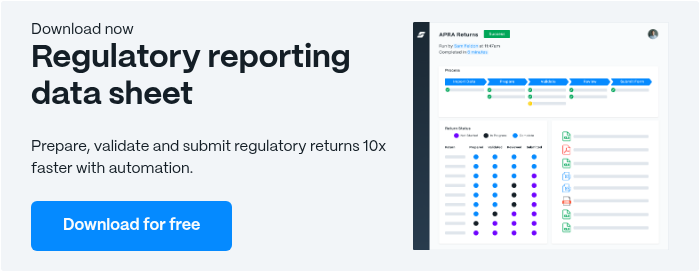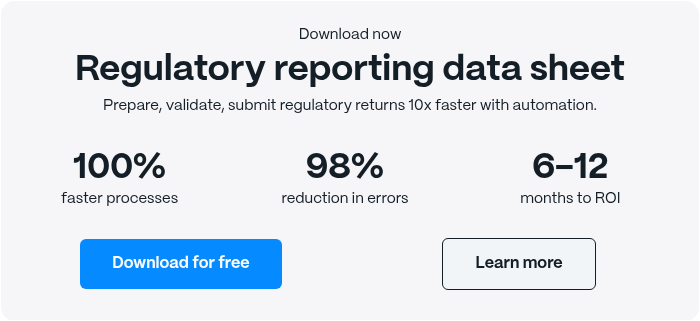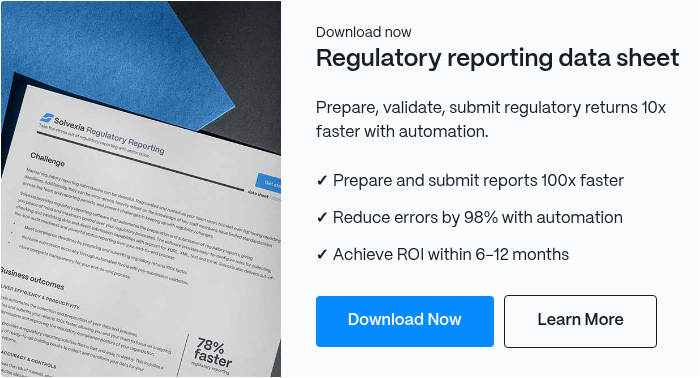What is Compliance and Risk Management: Key Differences

There are the right ways to do things, and the wrong ways. When it comes to operating a business, compliance and risk management is key to ensure that you’re doing everything by the books and are able to avoid the negative consequences of breaking rules or regulations.
To execute risk management steps with efficiency, automation tools can be of great value. In this article, we are going to touch on the types of risk management and how automation can help your organisation do things right (and well).
Coming Up
2. What is Compliance Risk Management?
3. What is the Difference Between Compliance and Risk Management?
4. What are the Benefits of Risk Management Technology?
5. What is APRA's Approach to Compliance Risk?
6. What are the 3 Needs of Compliance Risk Management?
7. What are the Steps of Compliance Risk Management?
8. What are the Risks of Not Meeting Compliance Obligations?
9. What are Industry Specific Compliance Risks?
10. What are the Types of Compliance Risk?
What is Compliance Risk?
Compliance risk refers to an organisation’s ability to comply with regulations, standards, laws and rules. This is with respect to both internal and external rules that govern its operations and policies.
In many industries, such as the financial sector, there are strict consequences of failure to comply. Additionally, it can become a bit challenging to keep up with ever changing rules and regulations because there are so many different types of financial services and no single set of obligations to follow.
This means that with constantly changing regulations and rules, organisations have to adjust and remain agile to change. With manual and disparate processes, this can be hard to do. However, the solution lies in automation software that can be easily adjusted to execute processes swiftly while remaining compliant.
What is Compliance Risk Management?
Compliance risk management is the process of identifying, reviewing, and monitoring your organisation’s compliance risks. It involves internal controls and mechanisms that help your company to comply with regulations, as well as the process of overseeing said controls to ensure they are effectively working.
In an effort to reduce compliance risk, organisations that execute compliance risk management assess the potential impact of compliance risk and determine how to move forward to curb or reduce the risk.
While mistakes are inevitable, the goal of compliance risk management is to reduce the operational risk of non-compliance within an acceptable threshold set by stakeholders and regulators.
What is the Difference Between Compliance and Risk Management?
Compliance and risk management are two different concepts with some inherent overlap.
Compliance risk management is a subset of enterprise risk management (ERM). Enterprise risk management entails addressing every type of risk your business can face. Compliance risk management sets its focus on regulations and laws. That’s to say that a complete risk management program will undoubtedly entail compliance risk management, too.
Risk management takes a more strategic approach and relies on analysis to determine what risks are worth taking and which are worth avoiding. On the other hand, compliance risk management can be thought of with a checklist approach to cross off items to adhere to regulations. In turn, your organisation can avoid fines and penalties.
Compliance risk management addresses regulations that are in place and known, even if they are newly announced. Risk management, in an ideal world, will be addressed proactively as it relies on forecasting the impact of risk.
Additionally, compliance risk management tends to be spearheaded by a single department or led by a compliance officer. Risk management must be approached collaboratively and typically involves all departments as the organisation as a whole determines whether technology and processes will generate enough value to take on any associated risk.
What are the Benefits of Risk Management Technology?
Risk management technology can help to address both compliance risk and enterprise risks. With the right technological tool in place, your organisation can benefit from having technology that:
- Stores all up-to-date information of known governance (internal policies, contracts, regulations, etc.)
- Provides a full audit trail
- Connects with other systems to upkeep compliance
- Defines the relationships between processes and people and what has to be done
Along with these benefits, risk management software allows for strategic risk management through the use of analytics and data-driven insights. With access to advanced analytics, your organisation is able to predict the impact and consequence of potential risks in advance. This allows you to make informed decisions for how to proceed. It also helps to prioritise your attention and concerns.
Technology that automates processes is able to immediately reduce compliance risk as you are able to standardise processes and ensure that they run as intended every time. They also provide audit trails and can map out processes removing key man dependany as well as implementing approval flows.
What is APRA's Approach to Compliance Risk?
APRA is The Australian Prudential Regulation Authority that serves as a statutory authority of the Australian government and is regulator of financial services. APRA believes that compliance risk management should be of utmost priority within an organisation and by having a well-documented plan in place, organisations are better able to create value as opposed to having to deal with the consequences of non-compliance.
APRA’s approach is one that is based on people and processes to make sure that if a compliance breach occurs, the organisation can understand why it occurred and make the necessary adjustments to prevent it from happening again.
What are the 3 Needs of Compliance Risk Management?
When it comes to compliance and risk management, APRA has put forth three defining observations and needs to establish an effective compliance risk management program.
These include:
1. Defined Approach
It’s recommended to take a hybrid approach in which you incorporate input from compliance subject matter experts , as well as representatives from each business unit.
2. Established Processes
By putting established processes in place, your organisation can ensure that all compliance rules and regulations are addressed and taken care of. This begins by understanding and mapping business processes and can be streamlined using automation software.
3. Clear Accountability
APRA sets forth a clear accountability framework with three lines of defence, being 1. The business, 2. Risk management for oversight and 3. Internal audit to perform independent assurance.
What are the Steps of Compliance Risk Management?
To implement your own compliance risk management, consider following these risk management steps:
1. Identify your Obligations
Start by identifying and defining your organisation’s duties and liabilities towards the government and internally. This will require that you perform some research to check for any new compliance obligations that may have been released.
2. Carry out Risk Assessment
Conduct a risk assessment to determine how the compliance regulations could be putting your organisation at risk with your current processes and operations. Put simply, this comes down to assessing your threats and determining which efforts are worthwhile to allocate resources towards.
3. Set Policies & Procedures
Once you determine where your compliance gaps may be, then it’s time to implement policies and processes that will ensure compliance is met. To do so, assign responsibility and clear roles to those who will be in charge of adhering to the standards.
4. Report on your Efforts
After you’ve set your processes in place, be sure to regularly check in and report on how your organisation is managing its compliance efforts. Keep a record of compliance efforts for internal or external audits.
Keep in mind that if you have an automation solution in place that automates your business processes, then this will all be a part of the technology, so you’ll have one less thing to worry about.
What are the Risks of Not Meeting Compliance Obligations?
The processes of compliance and risk management are so important because without it, your organisation can face some serious consequences. Consequences of non-compliance include:
1. Penalties
Federal and state laws often charge monetary penalties for failure to comply with rules. Additionally, when a company faces such penalties, there’s the added cost of paying for investigators, auditors, lawyers, and more.
2. Reputational Damage
With an increasingly connected world and social media, any organisation’s failures are quickly known by all. This can result in reputational damage that can impact your company’s brand image, customer loyalty, and in turn, bottom line.
3. Supply Chain Access Blocks
For international non-compliance, such as the failure to pay import taxes for example, could result in blocks, which would mean your business is unable to receive supplies from abroad.
What are Industry Specific Compliance Risks?
As we alluded to, many industries face regulations and rules, but some industries are more strict than others. Here’s a look at some industry-specific compliance risks:
- Banking: Banks have to adhere to regulations set forth by the FDIC, or Federal Deposit Insurance Corp. along with multiple regulatory agencies
- Pharmaceuticals: In America, for example, quality control is set forth by the Food & Drug Act along with HIPAA privacy rules
- Retailers: From GDPR to Payment Card Industry Data Security Standard (PCI DSS), regulations exist to protect consumers’ privacy and information
What are the Types of Compliance Risk?
The types of risk management implemented will depend on the types of risk you are facing. For compliance risk, be aware of:
- Corrupt practices - such as bribery or fraud
- Social responsibility - the risk of harm to your employees or people in the communities in which you operate
- Workplace health and safety - to protect against accidents or injuries
- Quality - selling a product or service that does not meet industry standards or violates laws
- Environmental - causing damage to organisms or the environment due to business practices
- Process - the risk that your processes will result in violations (could also have to do with accounting processes and reporting errors. See how financial automation software can help protect against such risks).
Final Words
With all that happens in your organisation, you’re aware of the importance of compliance and risk management. No business wants to face the consequences of failing to comply, whether it’s financial, reputational, or operational effects.
In an effort to alleviate the stress surrounding compliance, you can leverage the aid of technology and automation software to streamline, standardise, and automate processes so that you can ensure accuracy, efficiency, and compliance, even when regulations are constantly changing.
Additionally, you’ll be able to forecast with accuracy and analyse risk in advance to properly address concerns before they grow too big to manage.
FAQ
Intelligent reconciliation solution
Intelligent rebate management solution
Intelligent financial automation solution
Intelligent Financial Automation Solution
Intelligent financial automation solution
Intelligent financial automation solution
Intelligent financial automation solution
Intelligent financial automation solution
Intelligent regulatory reporting solution
Free up time and reduce errors
Recommended for you

Request a Demo
Book a 30-minute call to see how our intelligent software can give you more insights and control over your data and reporting.

Reconciliation Data Sheet
Download our data sheet to learn how to automate your reconciliations for increased accuracy, speed and control.

Regulatory Reporting Data Sheet
Download our data sheet to learn how you can prepare, validate and submit regulatory returns 10x faster with automation.

Financial Automation Data Sheet
Download our data sheet to learn how you can run your processes up to 100x faster and with 98% fewer errors.

Financial Automation Data Sheet
Download our data sheet to learn how you can run your processes up to 100x faster and with 98% fewer errors.

Financial Automation Data Sheet
Download our data sheet to learn how you can run your processes up to 100x faster and with 98% fewer errors.

Financial Automation Data Sheet
Download our data sheet to learn how you can run your processes up to 100x faster and with 98% fewer errors.

Financial Automation Data Sheet
Download our data sheet to learn how you can run your processes up to 100x faster and with 98% fewer errors.

Financial Automation Data Sheet
Download our data sheet to learn how you can run your processes up to 100x faster and with 98% fewer errors.

Rebate Management Data Sheet
Download our data sheet to learn how you can manage complex vendor and customer rebates and commission reporting at scale.

Top 10 Automation Challenges for CFOs
Learn how you can avoid and overcome the biggest challenges facing CFOs who want to automate.
.svg)









